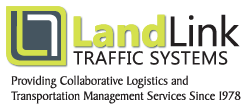Supply chain issues are slowly improving but Covid related supply chain and logistics hurdles remain; namely, port congestion and related container backlogs, the ongoing need for more truck drivers to over-the-road motor carrier capacity, inflation and the labor outlook. Look to 3Pl’s to help manage the lingering these supply chain challenges.
Port Congestion and Related Container Backlogs
The ports of Los Angeles and Long Beach, which last year became the focal point of the massive supply-chain meltdown that left store shelfs empty and cranked up inflation, have been making much progress in recent months addressing some of the most acute bottlenecks on the docks, but many underlying problems persist.
The backlog of containers with furniture, clothing, electronics and other imports that were piling up at the largest port complex outside Asia last summer and fall has been dwindling. The so-called dwell time a container sits around on average before it gets picked up has fallen by more than half from late October and there are no longer dozens of ships at anchor outside the ports waiting for weeks before they can berth and offload their cargo.
Although the stacks of containers with imported goods have been shrinking at the ports, the even larger stacks of empty containers that need to be sent back haven't budged much. The unyielding pile-up of more than 100,000 empty containers at the ports in turn creates a headache for truckers who need to offload their empty container before they can pick up a loaded one at the terminals. Until we resolve the import export imbalance port congestion will continue. The ports have taken a number of steps to address the worst of the congestion. A "dwell fee" ocean carriers will have to pay for containers sitting on the terminals too long was announced in October but it hasn't been implemented so far because of the 55% reduction in time containers spend on average on the docks. The Port of Los Angeles is now also considering fees and incentives to encourage the shipping lines to remove the empty containers.
The Relentless Need For More Drivers
The need for more truck drivers is an ongoing problem which will likely never be solved with human drivers. They’re simply a dying breed.
The United States is experiencing a shortage of more than 80,000 truck drivers, according to an estimate from the American Trucking Associations. The ATA also estimates that about 72 percent of America’s freight transport moves by trucks, which shows just how dependent consumers are on the drivers who deliver turkeys to stores or gas to pumps or the Christmas presents you order to your doorsteps.
This is not just an American problem. Trucks haul comparable amounts of freight in places like the European Union and China, and countries and regions around the world are experiencing driver shortages. The International Road Transport Union documented shortages in a survey of 800 transport companies in more than 20 countries. According to the survey, about 20 percent of positions went unfilled in Eurasia last year.
Analysts and industry groups have warned of truck driver shortages for years, around the globe. But supply chain disruptions during the pandemic and surges in demand in places like the US have made this slow-rolling crisis much more acute. Automation and robotics is a most likely solution in the not so long term.
Carrier Capacity
Simple, capacity is very tight. Thanks to an increase in e-commerce and an abundance of freight, we are in the middle of a very carrier-friendly negotiating environment. LTL freight volume is exceptionally high, while carrier capacity is low. LTL carriers are in high demand and they are doing their best to meet the needs of all shippers. However, since they are feeling the constraints and are also dealing with the driver shortage, carriers are able to demand a little more from freight shippers. Look to a 3PL to negotiate the best deal for your organization.
Inflation
There is no argument that we are in an inflationary period. Inflation jumped at its fastest pace in nearly 40 years last month, a 7% spike from a year earlier that is increasing household expenses, eating into wage gains and heaping pressure on President Joe Biden and the Federal Reserve to address what has become the biggest threat to the U.S. economy.
Prices rose sharply in 2021 for cars, gas, food and furniture as part of a rapid recovery from the pandemic recession. Vast infusions of government aid and ultra-low interest rates helped spur demand for goods, while vaccinations gave people confidence to dine out and travel. Price gains could slow further as snags in supply chains ease, but most economists say inflation won’t fall back to pre-pandemic levels anytime soon.
Labor Market
Not since workers demanded the right to unionized have we experienced a labor market like this one; where labor has the upper hand. Todays Gen Xr's have drawn a line in the sand. Significant numbers are leaving the traditional workplace. While even others are quitting work all together. I still trying to figure out how they’re maintaining any type of lifestyle. The weirdness of todays labor market is a real head-scratcher for HR managers.
Turn to Land Link Traffic Systems for expert navigation advice in todays challenging Logistics environment.
Stay Safe Everyone.
To stay up to date on these and other Logistics topics subscribe to our blog @ http://www.Land-Link.com/blog.
Author
Michael Gaughan
Technology Officer
Land Link Traffic Systems


 Land-Link, a well respected professional organization, has been providing its clients with effective transportation and logistics solutions since 1978.
Land-Link, a well respected professional organization, has been providing its clients with effective transportation and logistics solutions since 1978.

